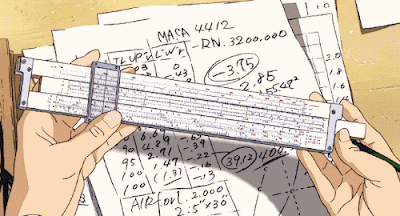Justifying The Wind Rises: Hope in Despair
In trying to articulate how I feel about the movie, I went back to watch it again for the third time. Even though it was my third time watching the movie, I was still blown away (no pun intended). The movie follows Jiro Horikoshi, an aeronautical engineer, through the development of his first fighter aircraft. Being his last film, Miyazaki was able to combine his love for both film making and flying machines together. In contrast to other Ghibli movies, The Wind Rises holds a more somber and realistic tone. The fantasy components of Ghibli films still prevail in Jiro's dreams, but they are constantly pushed back against the crushing waves of reality.
Nevertheless, what the movie reminded me of is Polish harpsichordist Wanda Landowska. When the Nazis were entering Paris in 1940, you could hear the sound of German cannons in the background in one of her recordings. Her dedication to her craft in times of calamity was unparalleled. Fictionally, this was the same case for Jiro as he must fight off his own fears of Imperial Japan and his wife's declining health while trying to maintain his vision of creating the first metal fighter. This theme of dedication amidst disappointment dominated the film.
While The Wind Rises and other Ghibli films end beautifully, the former doesn't resolve. What I mean is that older Ghibli films usually always resolve at the end (girl gets her parents back, the forest guardian helps find the protagonist's sister, a hat-maker peasant falls in love with a wizard). The Wind Rises doesn't give us the same satisfactory ending. Jiro's vision, that of creating beautiful aircrafts, literally comes crashing down. His one true love dies from lung disease. Yet the film's message that was in the opening sequence (taken from Paul Valéry's The Graveyard by the Sea) resonates loud and clear: the wind is rising and we must try to live. The key word here is try. I'm not saying that the movie leaves us with a nihilistic message. Jiro enters into a post-war world with a glimpse of hope to finally be able to design an aircraft for the sake of beauty and not for the purpose of war. It is a story about broken dreams, but all he can do is to try to live on. He is a victim of his times, his wife a victim of time, yet Jiro doesn't blame anyone.
Miyazaki's Ghibli imparts on us a world of hopes and dream through its animation. I think that The Wind Rises being Miyazaki's final film is appropriate. I grew up watching Ghibli films, it taught me a lot about friendship, imagination and resilience. But none of them taught me more about disappointment and dedication as much his last movie. As a concluding film to the company's saga of dreams, it ended with a melancholic yet justified tinge of reality. For our imagination must eventually cross paths with disappointment at some point.
What I've written so far may not convince you that the movie should deserve a better ranking on the tier, but it came into my life at an important time. It's hard to get over aeronautic jargons that Miyazaki used. As I enter sophomore year of my college career, my vision became clearer. My passions started to emerge. Like Jiro, I like to daydream a world that I would want to create. But reality often kicks in: grades, extracurriculars, family responsibilities and so on. It provides me with a comforting cushion: compromising your dreams with reality will not always end in chaos. It shows me how one can both dedicate to work and family at the same time. It gives me hope when I needed it most. And as I go into this academic year, hope will be what I will cling onto the hardest.










Comments
Post a Comment